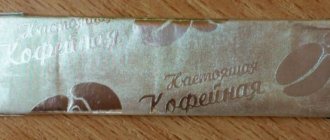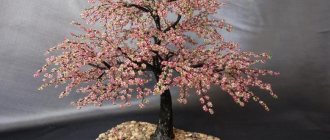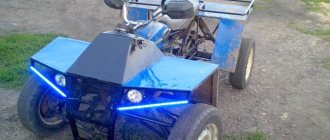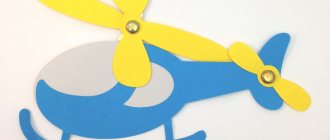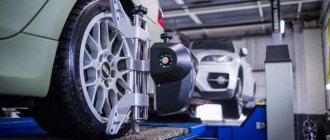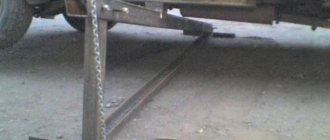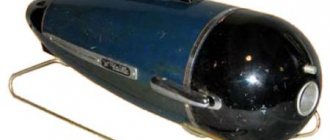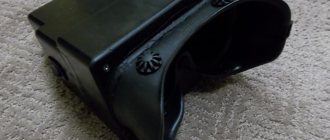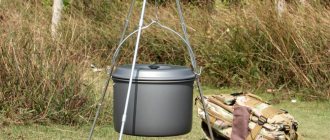Many technological processes directly depend on the quality and correct selection of nozzles (sprayers) for water, based on specific operating conditions; first of all, it is necessary to determine the type of spray and select the most suitable type of spray torch for the given case.
With this knowledge, you can always achieve the most effective spray results
- spray a precise amount of liquid,
- spray in the right place,
- spray at the specified time.
This will allow you to find the most appropriate and economical solution, reducing not only production costs, but also increasing enterprise productivity.
Hydraulic spray (single-component spray)
Spraying water using hydraulic nozzles occurs under the influence of pressure, which is achieved through a pump, which subsequently leads to the disintegration of the liquid into droplets. In other words, passing through a spraying device (nozzle), the liquid flow acquires a fairly high speed, transforming into a form that promotes rapid disintegration (jet, film, large particles, depending on whether the sprayer belongs to a particular class). Narrowing the cross-section of the nozzle increases the flow rate as potential energy is converted into kinetic energy (velocity). At the exit from the nozzle, when the pressure drops sharply, the laminar flow of liquid breaks up into droplets of various sizes and creates a specific spray pattern. Hydraulic spraying is the simplest and most energy-efficient spraying method.
Buying Tips
When choosing a sprayer, you should consider several points that will help you choose the optimal device for a specific load.
The size of the garden and the number of trees and bushes.
Frequency of treatments or watering. The need to use the device for purposes other than gardening. A sprayer with a small tank is easier to carry, but if there are a lot of plants, it will have to be constantly filled with water. It is also important to calculate your own strength: a tank that is too large will be difficult to carry. If you have to process tall plants, then you need to take a more powerful model with tubes of the appropriate length. For low objects, a simple model that costs less is suitable. When purchasing, it is important to carefully inspect the device, especially the seams, connections, and completeness. It is preferable to take plastic tank options. The backpack model needs to be tried on. The nozzles and device handles require special attention - it is best if they are made of metal or durable plastic. For an economical purchase, it is advisable to postpone the choice until the second half of summer - the closer to autumn, the higher the likelihood of purchasing with a solid seasonal discount or promotion.
Together with the sprayer, personal protective equipment is purchased - respirators, gloves, safety glasses.
Have you already purchased a battery sprayer?
Yes I'm going to
Pneumatic spray
Atomization of water using pneumatic nozzles occurs as a result of the dynamic interaction of liquid with a gas flow, in other words, due to the simultaneous supply of compressed air and liquid under pressure into the mixing chamber of a two-phase nozzle (atomizer). With pneumatic spraying, the determining factor in the destruction of liquid continuity is the effect of a high-speed gas flow, which serves to additionally split the slower liquid into tiny droplets. The gas flow leaving the channel has a high speed (50–300 m/s), while the liquid outflow speed is relatively low. Different flow rates of gas and liquid create friction and blast waves in the nozzle, as a result of which the liquid stream is pulled into separate threads and breaks into extremely small particles at thinning points. Thus, due to pneumatic action, a mist-like, fine spray is achieved. The advantages of the pneumatic spraying method include: the ability to obtain relatively fine liquid droplets (with an average diameter of about 100–200 microns), a less pronounced dependence of the spray quality on liquid flow, operational reliability, and the ability to spray relatively viscous liquids.
How to make it yourself?
Garden from a centrifugal (well) pump
If there is an unnecessary centrifugal pump lying around on the farm, it can be turned into a sprayer with characteristics that are not inferior to expensive models, and, importantly, without spending almost no money on parts.
Let's first consider the comparative characteristics of a standard type sprayer.
Battery garden backpack sprayer " COMFORT ":
- liquid flow: from 0.7 to 1.7 l/min;
- maximum pressure – 6 atm, adjustable from 0 to 6 atm;
- the ejection range of the output nozzle in the form of a jet is up to 7 m upward, up to 15 m horizontally.
:
- nominal water supply: 20 l/min;
- maximum pressure – 2 atm.
As can be seen from the figures, the fluid flow reserve of the Aquarius pump varies upward by almost an order of magnitude, and this can be turned into very good indicators.
The passport for the Aquarius pump states that the volumetric supply of water passing through the pump should not be less than 360 l/hour , otherwise this will lead to overheating of the pump and its shutdown.
To solve this problem, at the outlet of the pump, 50-100 cm from its outlet, you need to install a tee on the hose to connect a washing machine with a shut-off valve on the outlet arm, and use this valve as a regulator of the fluid pressure in the system.
The liquid passing through the outlet arm is directed through the hose back into the container, thereby forming a “small circuit” of circulation. This ensures the volume of liquid circulation necessary to cool the pump even when the spray system trigger is locked.
At the same time, by reducing the flow of liquid in a small circuit when closing the tap, the liquid rushes into the sprayer system with increased pressure.
This makes it possible to regulate the pressure in the sprayer system and ensure the necessary fluid circulation for normal pump operation.
Assembly steps, what is needed for this:
- plastic container for working fluid - the larger, the more convenient;
- filter for screening out solid particles when pouring working fluid into a container;
- hoses of sufficient length for watering throughout the garden area;
- standard telescopic “fishing rod” (material – brass or stainless steel), 110 or 230 cm long; it can be bought in a specialized store;
- centrifugal pump.
Since there is high voltage in the power supply system of the centrifugal pump, care must be taken to protect against electricity .
It is very dangerous to leave the plug connection lying on the ground, as well as to leave the power cord unprotected when working in the garden or in the presence of children.
Therefore, it is preferable to install the container for the working fluid in a protected, stationary place without the possibility of moving it.
Possible electrical protection options:
- flexible metal corrugated pipe, protected from mechanical damage, for laying electrical cables;
- residual current device (RCD) for protection against electric shock plus a circuit breaker for overload and short circuit protection.
If possible, it is best to consult a local electrician.
Assembly and adjustment of the system.
- We put the hoses on the corresponding pipes and carefully secure them with metal screw clamps.
- Fill the container with working fluid and submerge the pump. We set the position of the tee valve to the fully open position to check the circulation of liquid in the small circuit.
- Turn on the pump. If the pump is working, the liquid is circulating, there are no leaks at the connections, we proceed to debugging the system.
- By pressing the trigger of the sprayer, we gradually begin to close the shut-off valve until the required length of the spray jet is obtained in accordance with the passport data for the type of telescopic “fishing rod” used and the nozzles used.
After setting the required jet length, the system is configured and ready for use. After defeating the centrifugal pump, we will conquer the battery version.
Garden battery pump
It happens that a manual pump sprayer has already been purchased, but its pump suddenly breaks down. This fairly common breakdown can be circumvented by improving the sprayer itself.
For this you will need:
- sprayer bottle with working release valve;
- car nipple with sealing double-sided rubber band;
- car pump running on 12V;
- lead-acid battery 12V, 7-12 Ah;
- knife tips for battery terminals – 2 pcs.;
- a set of copper stranded wires in insulation for the necessary connections;
- VAGO express clamps with levers for connecting the battery and pump wires – 2 pcs.;
- inexpensive battery charger.
For the sprayer to operate, the pressure in the cylinder with the working mixture must be approximately 3 atmospheres.
If you decide to purchase a walk-behind tractor for your site, then the most acceptable and profitable option would be equipment from the domestic manufacturer Plowman.
Potato planters mechanize and improve the planting process, making the rows even, planting tubers at the same distance and the same depth.
Mini tractors have become very popular and in demand. Here you can get acquainted with the Scout mini tractor.
An automobile electric pump is initially designed for a pressure of up to 3-4 atmospheres and often has a built-in pressure indicator. Stages of work:
- A hole is marked on the cylinder where the nipple will be installed. It is better to mark closer to the neck for ease of future connections.
- The hole is drilled slightly smaller than the diameter of the nipple neck to ensure tight installation.
- The rubber seal of the nipple is lubricated with liquid soap and, using pliers, the nipple is installed in the drilled hole. Once installed, the nipple should hold pressure.
Pump assembly and connection:
- pour the required amount of liquid into the container;
- connect the pump hose to the nipple on the cylinder;
- connect the wires of the battery and the car pump, observing the polarity;
- turn on the pump and watch the pressure readings; when the pressure reaches 2.5-3 atm, turn off the pump;
- check the sprayer in operation.
After setting the required jet quality, the system is configured and ready for use. Next, the pump and battery need to be attached to the sprayer bottle. Any rectangular bag of the required size is suitable for this. It is advisable to make a hole in it for reading the pressure gauge.
For additional fastening to the bag, you can sew “Velcro” straps on top and bottom; the upper part of the straps will “encircle” the neck of the cylinder, the lower part – its middle part, making it possible to easily dismantle the entire structure.
A 12V 10Ah battery is enough to charge two cylinders with a capacity of 5 liters , while charging a battery of the specified capacity can take up to 10 hours. If this is not enough to complete all the work, you can purchase a second battery and charge them alternately.
And finally, the simplest option. How to make a sprayer from a simple plastic bottle. If you have a desire to increase spraying productivity without purchasing expensive devices, you can get by with little effort.
For this you will need:
- a children's bicycle pump accidentally found on the mezzanine (or its store-bought equivalent Puky HP-25);
- plastic bottle of the required volume;
- bicycle nipple;
- a spray bottle (a spray nozzle screwed onto the neck of a standard plastic bottle);
- needle nose pliers.
Procedure:
- We cut out a nipple from an old bicycle inner tube along with the round rubber section into which it is glued. The diameter of the rubber “washer” is about the size of an average coin; it will serve as an internal seal.
- We unscrew the sealing nut from the nipple body - it will tighten the connection from the outside.
- We drill a hole in the upper part of the plastic bottle with a diameter for the nipple.
- We insert the nipple into the neck of the plastic bottle and “catch” it inside using two knitting needles, directing it into the drilled hole.
- We grab it with needle nose pliers and pull the nipple out, pressing the rubber seal against the wall from the inside.
- Place a couple of drops of waterproof glue onto the hole between the nipple and the edges of the drilled hole.
- We cut out the second rubber sealing washer from the bicycle inner tube and, after the glue has dried, carefully put it on the nipple.
- Screw the nut on top of the nipple until it stops.
All that remains is to screw the hose from the pump to the nipple, fill in the liquid and screw the spray bottle onto the neck.
If the size of the plastic bottle is noticeably larger than the liquid intake pipe that comes with the spray bottle, any plastic tube of the same diameter will do for replacement; the main thing is that it reaches to the bottom and has a slightly “oblique” cut.
After installing the spray bottle, you need to secure the pump with transparent tape to the bottle.
The pump handle in the closed position should be slightly higher than the neck of the plastic bottle and spray bottle, so that your fingers do not touch its walls and interfere with the pumping process, and also so that the handle does not interfere with unscrewing the spray bottle.
Make several pumping movements with the pump, feeling how the walls of the bottle become elastic. After inflating the container to almost the density of a “soda bottle,” you can press the spray handle. The jet pressure and the absence of the need for frequent pumping will pleasantly please you.
Spraying with a “hollow cone” spray
Spraying with a “hollow cone” spray is achieved due to the fact that the liquid tangentially enters the swirl chamber or falls on a specially shaped swirler. As a result, the circular motion imparted to the liquid flow leads to the fact that the jet forms a hollow cone at the exit from the nozzle.
A distinctive feature of spraying with a hollow cone is that the spot of the sprayed liquid on the irrigation surface has the shape of a ring. So, for example, when spraying water, for example, on dry asphalt, we will get a wet ring, and the center of this ring will remain dry.
These nozzles can produce the finest, mist-like spray. Lechler hollow cone nozzles are used for humidification, cooling, disinfection, dust suppression and many other tasks, that is, where it is necessary to create the smallest possible droplet.
Scheme of water movement during sprinkler operation
High irrigation efficiency directly depends on how far the sprinkler sprays, how well the water distribution is maintained in strong winds, and the size of the water droplets. Droplets that are too small significantly impair spray uniformity.
Wind drift leads to wasteful consumption of moisture and electricity. Instant coverage of the entire area with moisture reduces the degradation of the soil structure.
Sprinklers are installed so that the irrigation range of one product coincides with the start of action of the other. This placement ensures complete coverage of the humidification spray zones. This method is called “head to head” because it is associated with the peculiarity of moisture distribution during the operation of irrigation systems.
Full cone spray
Spraying with a “full cone” spray is achieved using a swirler, which shapes its flow in a certain way before the liquid leaves the nozzle. Full cone spraying produces a round, square, rectangular or oval spray pattern that is completely covered in liquid stains. Nozzles of this type irrigate the entire surface of the circle.
A distinctive feature of full cone spraying is that irrigation occurs extremely evenly, but the size of the droplets in this case is larger than with hollow cone nozzles.
Sprayers for tractors: classification
The most common tractor attachment includes a sprayer. This device is simply irreplaceable in regions with a hot climate, because the yield on the site largely depends on its presence. However, the cost of some models of sprayers is quite high, which does not allow anyone to purchase them. In this case, you can make a homemade device that will be practically in no way inferior to its factory counterparts.
On the modern market you can find a wide range of sprayers. All of them lend themselves to certain classifications. The most important of them is the method of installation on the tractor.
Based on this factor, equipment is divided into the following types:
sprayers mounted on a standard tractor chassis - the volume of such designs ranges from 400 to 800 liters. The tractor-mounted sprayer is capable of processing strips with a width of 12 to 18 meters. The main advantages of such equipment lie in its compactness and maneuverability. Among its disadvantages, low performance should be highlighted;
sprayers that are connected to the tractor by means of trailed devices - these devices include trailed structures. Their main area of application is spraying chemicals on areas whose area is up to 1 thousand hectares. During operation, the width of the captured strip can be adjusted in the range from 12 to 36 m. The tank for filling chemicals is 2–4 m3. Trailed sprayers are in greatest demand when processing large agricultural lands in Eastern Europe;
self-propelled sprayers - this group includes large-sized and very expensive equipment that is in high demand on plantations in Western Europe and America. The scope of application of such complexes is territories with an area of 1 thousand hectares.
In addition to the method of installation on the tractor, sprayers are also divided among themselves according to the volume of the built-in tanks.
Based on this factor, equipment is divided into the following types:
- ultra-small sprayers - devices of this type are equipped with tanks with a capacity of no more than 5 liters;
- small sprayers – such designs include tanks with a capacity of 75 to 100 liters;
- medium sprayers – they are equipped with tanks with a capacity of 100 to 200 l;
- large sprayers - equipped with tanks with a capacity of 200 liters or more.
To work with tractors, the last two types of designs are most often used. Smaller sprayers are used a little less frequently for the operation of agricultural machines, but only if it is planned to process a middle plot with a small row spacing.
Spraying with a “flat jet” spray
Spraying with a “flat jet” spray is formed either due to the elliptical shape of the nozzle outlet, or due to the round outlet located tangentially with respect to a special reflective surface. This torch forms flat-jet nozzles, which are also called slot nozzles, since the nozzle of the nozzle usually represents a slot, which forms a flat, linearly shaped jet that expands to the sides.
Nozzles with a so-called flat spray pattern produce a fan-shaped or disc-shaped liquid distribution.
This jet has a significantly smaller area than that of cone nozzles, which in turn significantly increases the impact force of the jet. Lechler flat jet nozzles are used in surface treatment processes, washing, cleaning, lubrication and other areas, that is, where it is necessary to exert the maximum possible impact on the surface being sprayed using the sprayed liquid.
Digging equipment
Potato diggers of various types are very popular among farmers. These devices save people from hard manual labor, speeding up the harvesting process several times. The walk-behind tractor has a very simple design. It can be made from metal that remains after the construction and renovation of a house.
To work you will need:
- Bulgarian;
- welding machine;
- electric drill;
- heavy hammer;
- anvil;
- profile steel pipe 20x40 mm;
- reinforcement 12 mm;
- tin (preferably stainless);
- bayonet shovel without handle.
The attachment to the walk-behind tractor is made in a suspended or trailed (modular) design. The hanging tool only digs up the tubers, leaving them lying on the surface for subsequent manual harvesting. A modular potato digger not only extracts the crop from the ground, but also collects it in a mobile container on a chassis.
The manufacture of a digger is carried out in the following sequence:
- Drawing up a drawing. The width of the digger should be within 25-30 cm. The angle of attack of the tip is taken perpendicular to the coulter so that the tool does not bury itself in the ground.
- The reinforcement is cut into fragments of a given length. Using a hammer and anvil, they are given the required bend.
- A container for tubers is assembled from a profile pipe and tin. The chassis or skids are welded to the container frame. The runners are made from pipes, and the chassis is taken from an old stroller, cart or lawn mower.
- The holder and reinforcement bars are welded to the shovel. A drawbar is welded to the holder, which is fixed to the assembly container. Connections are made movable using bolts or hinges.
- Rust and weld marks are removed. The finished product is treated with an anti-corrosion agent and coated with paint.
Adjustment and adjustment of the digger is carried out using racks and steel ties.
Included with the digger, you can immediately make a disk hiller. This tool will be needed when planting tubers after they have been buried in a trench made by a plow. Hillers are made from old pot lids, profile pipes and bolts. A trolley is assembled from pipes and small wheels, onto which holders for lids are welded at a certain angle. After sharpening on a stone, the discs are mounted on holders.
Spraying with a “full, solid jet” torch
Spraying with a “full, solid jet” torch is a continuous stream of liquid coming out of the hole. In this case, no spraying occurs at all, since the liquid, combined into one stream, forms one single, focused jet of maximum strength.
The design of the nozzles helps prevent the formation of turbulence inside the nozzle body, which, in turn, prevents the liquid from disintegrating into droplets at the maximum extent of the jet. As a result of this, the jet, leaving the nozzle, retains its shape and continuity over large stretches, and hence the high impact force on the surface.
Lechler all-jet nozzles are used in intensive cleaning processes, water jet cutting, edge cutting, loosening or washing away sludge and bottom sediments, that is, where a targeted water jet with maximum impact force is required.
Where to buy and how much they cost
Every owner of a garden, cottage or vegetable garden must have a watering system in his arsenal if he wants to reap good harvests or admire the lush greenery of flower beds and lawns. When you have the financial opportunity to purchase professional equipment for watering your garden with water, you should choose brands that have proven themselves to be high-quality mechanisms, such as Karcher.
- The Hozelock company, working in the market specializing in garden equipment, components, and hoses, is ready to provide a wide range of products that you can choose from on the website hozelock-ru.com. The price range depends on the model and purpose of the selected irrigation product.
- The Garden Engineer online store on its website sadin.ru offers rotary sprinklers and accessories for them. You can purchase a nozzle for 67.20 rubles, and the sprinkler itself from 972 rubles. and higher.
- The ozon.ru website is ready to offer garden equipment from famous brands such as Kärcher, FIT, TRUPER, Marolex. In the assortment of the online store, which is located in Moscow, Chapaevsky Lane, 14, you can choose and order sprayers, sprinklers, including rotating, pulse, tips, pistols, and filters for home delivery. Prices for the existing range of goods from 254 rubles. Half of all store sales occur in Moscow and St. Petersburg.
Popular models
There is a wide range of battery-powered electric sprayers on the market. Let's highlight several options:
- Umnitsa OE-10L-N 10 L is a sprayer with a battery, having a volume of 10 l and a weight without liquid of 4.57 kg. Designed for weed control, removal of pests on grass and trees, window treatment and car washing. Modern developments were used in the production, guaranteeing maximum efficiency in comparison with mechanical devices. The model has a regulator for changing the spray activity, a two-meter hose and a large neck for filling liquid. The tank is made of plastic. Productivity is 2.1 liters per minute, battery capacity is 3.3 mAh.
- Comfort Clever. Electric sprayer with battery. OE-16L-N. This model has a 16-liter tank and a battery with an increased charge level of 8 mAh. The set comes with an adjustable telescopic steel rod. The kit also includes a removable filter, a neck, a 150 cm long tube and other parameters. In the manufacture of the tank, high-quality plastic was used, resistant to various chemical components. There is a removable filter installed inside to protect against contamination. The model is reliable and easy to use.
- Electric sprayer “Umnitsa” OE-2L. This is a compact device with a small tank measuring 2 liters. The battery has a small capacity of 2.2 mAh. The product has a portable design, which allows it to be used in hard-to-reach places. The advantages include high performance, low fluid consumption and minimal weight. The casing has a built-in button for turning it on and off, there is an LCD display and an indicator showing the liquid level.
- Caiman Fog King PS20E is a battery-powered sprayer weighing 5 kg. A 4 Ah lithium-ion battery is installed inside. The capacity of the container is 20 liters. Liquid is dispensed at a rate of 1.5 liters per minute. A backpack strap is provided for carrying. The model is suitable for disinfection and spraying of various plants. The generated pressure of 10 bar is sufficient for effective application.
An electric sprayer is a multifunctional device that allows you to fight weeds and pests, quickly wash windows and a car, and also solve other problems. The main thing is to choose wisely and buy a model taking into account real requirements and tasks.
What you need to remember...
- When working with any sprayer, it is necessary to use a gauze mask to protect the respiratory system, avoid getting the solution in the eyes and on exposed skin.
- After working with the sprayer, you must thoroughly rinse the container and flexible hose, removing any remaining solution.
- Before use, the finished solution is passed through a paper or fabric filter to avoid clogging the nozzle.
Gardeners who grow various types of plant crops in their gardens agree: without proper and timely care of your plants, you won’t get far. One of the effective tools for such care is undoubtedly a garden sprayer.
DIY sprayer for trees: homemade sprayer with pump
The quality of the grown products, its productivity, and, ultimately, the return on financial and physical investments depend on the timely and high-quality use of special means
Every gardener wants to please himself and his loved ones with a harvest grown with his own hands, which can be preserved and increased in the future.
A garden sprayer is an important and highly effective tool in the competent organization of work in the garden, allowing you to protect the plant, fertilize it on time, carry out preventive maintenance, while using a minimum of harmful substances, acting selectively and accurately.
